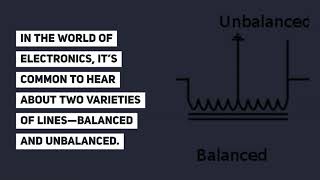In the world of electronics, it’s common to hear about two varieties of lines—balanced and unbalanced. Balanced lines have two conductors, which feature equal currents running in opposite directions. An example of balanced lines is twisted pair cables. On the other hand, unbalanced lines feature just one conductor and a ground, like a coaxial cable.
Baluns are two-port components that are placed between a source and a load. They serve to join balanced lines to unbalanced lines. The term “balun” is derived by combining the words “balanced” and “unbalanced.” Baluns are a specific variety of transformer used to convert unbalanced signals into balanced ones (or vice versa). They often isolate a transmission line and provide a balanced output.
Why Balun Transformers?
While there has been recent emphasis on the importance of balun transformers, they aren’t a new development. Baluns have been utilized as a mean of resolving the single-ended/balanced dilemma since the early days of wireless telephony. However, recent expansion in the realm of portable, handheld, and IoT applications has created exceptional demand for small, low-power baluns.
Baluns are often viewed as a passive component and can sometimes be “glossed over” in RF discussions because they do not add obvious value to the RF signal chain. Despite this, baluns have numerous typical applications. They are a critical part of numerous electronic devices that the public relies on daily. Some of these include:
- TVs
- Antennas
- Microwaves
- Cable moderns
- Coax Alliance applications
Recent years have seen an increased use of differential configurations when it comes to RF ICs. Their internal topology allows for improved noise immunity and heightened RF performance at a low-cost increment. The nature of IC designs affords manufacturers the capability to create products with improved capabilities that cost less than their predecessors.
The MPS Difference
MPS-brand balun transformers are known for their exceptional impedance transformation. As with all baluns, they convert unbalanced impedance to balanced impedance and vice versa.
Our balun transformers feature a low profile, making them ideal for specialized applications where larger components may prove difficult. Their compact footprint and high performance translate to tiny powerhouses with exceptional capabilities; they offer higher performance than traditional lumped-element and ceramic baluns.
In addition, our balun transformers meet regulatory requirements and are RoHS compliant. We serve clients in a wide variety of industries, and our baluns are ideal for use in CATV, multimedia applications, wireless infrastructure, and other consumer electronics applications.
Does Your Application Require a Balun Transformer?
At MPS Industries, we’re proud to offer our clients a variety of balun transformers that have been specifically designed to meet the needs of virtually any application. We also offer a myriad of magnetic components intended for use across numerous industries.
Our team has years of experience in manufacturing electronic components, and our clients consistently return to us because of our broad product line, custom design capabilities, and quality services. Our in-house engineering group is always available for local support and we’re committed to providing products that exceed customer expectations.
Interested in learning more about MPS Industries’ balun transformers? Get in touch with us today or request a quote to speak to one of our team members about integrating balun transformers into your next design.
